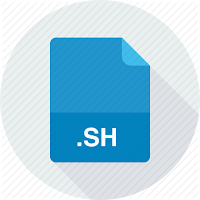Let's take a look at the concept:
- Most of user now days use computer with GUI to interact with the program.
- In the world of software development & system administration the program don’t have/ don’t need them (GUI).
- Like the server program, it’s placed in a data center and without monitor. One way we interact with the server or program that don’t have a GUI is through command line.
- Command line is text based interface where we type command and get direct text input and output to screen/files/other program.
- The environment we use is SHELL/command line interpreter, many shell variation out there.
- The SHELL is default user interface to LINUX. On the GUI based you could use the TERMINAL.
- Start in 1971 by Thompson Shell for UNIX.
- Common Linux use BASH SHELL (Bourne Again Shell).
When the shell started its showed prompt by default.
The Prompt example:
farihin@farihin-server:~$
root@farihin-server:~#
The promp give you some information, like the example above:
farihin/root = username currently used
farihin-server = hostname/computer name
$ = using shell as normal user
# = using shell as super user (root)
~ = showing home/parent directory
root folder and root user is different thing.
Basic shell command:
- Most of user now days use computer with GUI to interact with the program.
- In the world of software development & system administration the program don’t have/ don’t need them (GUI).
- Like the server program, it’s placed in a data center and without monitor. One way we interact with the server or program that don’t have a GUI is through command line.
- Command line is text based interface where we type command and get direct text input and output to screen/files/other program.
- The environment we use is SHELL/command line interpreter, many shell variation out there.
- The SHELL is default user interface to LINUX. On the GUI based you could use the TERMINAL.
- Start in 1971 by Thompson Shell for UNIX.
- Common Linux use BASH SHELL (Bourne Again Shell).
When the shell started its showed prompt by default.
The Prompt example:
farihin@farihin-server:~$
root@farihin-server:~#
The promp give you some information, like the example above:
farihin/root = username currently used
farihin-server = hostname/computer name
$ = using shell as normal user
# = using shell as super user (root)
~ = showing home/parent directory
root folder and root user is different thing.
Basic shell command:
|
Command
|
Description
|
|
cat [filename]
|
Display file’s contents to the standard output
device
|
|
(usually your monitor).
|
|
|
cd /directorypath
|
Change to directory.
|
|
chmod [options] mode filename
|
Change a file’s permissions.
|
|
chown [options] filename
|
Change who owns a file.
|
|
clear
|
Clear a command line screen/window for a fresh
start.
|
|
cp [options] source destination
|
Copy files and directories.
|
|
date [options]
|
Display or set the system date and time.
|
|
df [options]
|
Display used and available disk space.
|
|
du [options]
|
Show how much space each file takes up.
|
|
file [options] filename
|
Determine what type of data is within a file.
|
|
find [pathname] [expression]
|
Search for files matching a provided pattern.
|
|
grep [options] pattern [filesname]
|
Search files or output for a particular pattern.
|
|
kill [options] pid
|
Stop a process. If the process refuses to stop, use
kill -9 pid.
|
|
less [options] [filename]
|
View the contents of a file one page at a time.
|
|
ln [options] source [destination]
|
Create a shortcut.
|
|
locate filename
|
Search a copy of your filesystem for the specified
|
|
filename.
|
|
|
lpr [options]
|
Send a print job.
|
|
ls [options]
|
List directory contents.
|
|
man [command]
|
Display the help information for the specified
command.
|
|
mkdir [options] directory
|
Create a new directory.
|
|
mv [options] source destination
|
Rename or move file(s) or directories.
|
|
passwd [name [password]]
|
Change the password or allow (for the system
administrator) to
|
|
change any password.
|
|
|
ps [options]
|
Display a snapshot of the currently running
processes.
|
|
pwd
|
Display the pathname for the current directory.
|
|
rm [options] directory
|
Remove (delete) file(s) and/or directories.
|
|
rmdir [options] directory
|
Delete empty directories.
|
|
ssh [options] user@machine
|
Remotely log in to another Linux machine, over the
network.
|
|
Leave an ssh session by typing exit.
|
|
|
su [options] [user [arguments]]
|
Switch to another user account.
|
|
tail [options] [filename]
|
Display the last n lines of a file (the
default is 10).
|
|
tar [options] filename
|
Store and extract files from a tarfile (.tar) or
tarball (.tar.gz or .tgz).
|
|
top
|
Displays the resources being used on your system.
Press q to Exit
|
|
touch filename
|
Create an empty file with the specified name.
|
|
who [options]
|
Display who is logged on.
|


Post a Comment